There are some people who think that pests only infest outdoor plants. In fact, many houseplants are also attacked by pests; they exist and will probably find your plants at some point.
If you catch them early on, you will easy to manage their infestation. In the post today, we will share the 10 Houseplant Pests and Ways to Control Them if your plants end up with one of these damaging pests. Ready to learn more?
Although houseplants are easy to grow, they also have some problems that affect their growth. All plants are vulnerable to a range of insects, and houseplants are no exception.
Maybe your houseplants are struggling with one of the most common pests. Don’t worry, you are reading the right post to find methods!
#1 Fungus Gnats
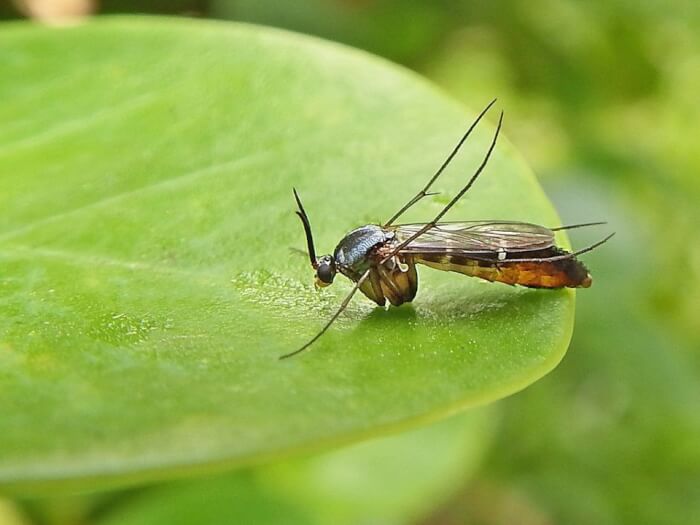 Source: Drecampbell
Source: Drecampbell
Fungus gnats are super annoying; they feed on the roots of the plants, which affects the growth of the plants, but do not kill them. They typically appear when you overwater your plants because the fungus gnats breed in damp soil.
To avoid the existence of this pest, you make sure you allow the soil to dry out completely between watering and not overwatering.
#2 Root Ball Pests
 Source: Plantcaretoday
Source: Plantcaretoday
Pillbugs, millipedes, and slugs are root ball pests that cause serious issues since the roots are responsible for the uptake of nutrients and water into your plant.
If you suspect that your plants have root ball pests, you can take the plant out of the container. Or you can also rinse the soil away and repot in fresh soil.
In case those steps don’t work, let’s pour an insecticide soil treatment through the soil in the container.
#3 Thrips
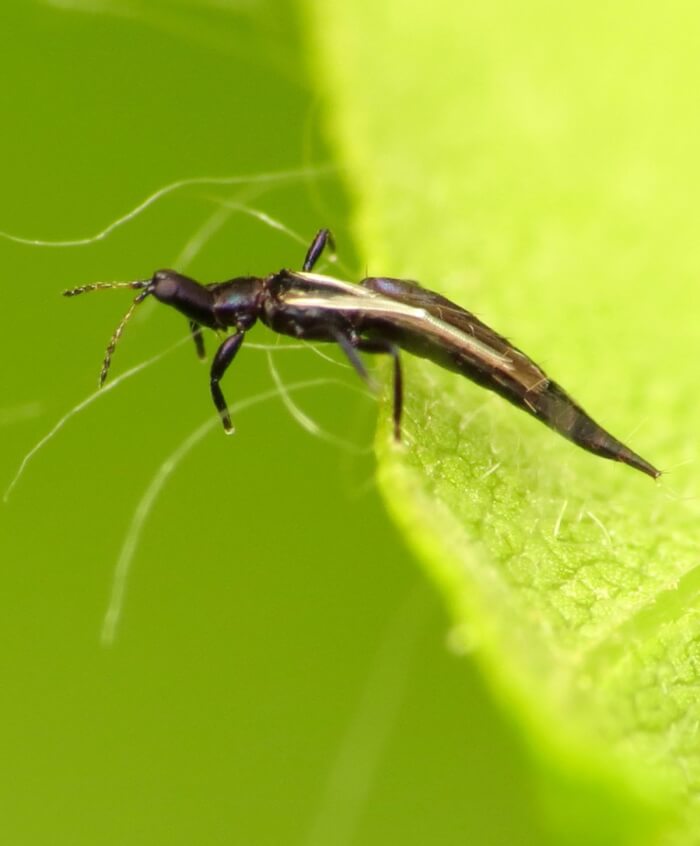 Source: Natureandgarden
Source: Natureandgarden
Thrips are one of the most common houseplant pests. Although they have a small and slender shape, they can cause serious damage by sucking the sap out of the leaves, stems, flowers, and buds, leaving behind droplets of excrement that look like black specks.
You can control them in some ways, such as spraying or washing your plants, but don’t use a homemade mixture of regular soap and water. Or take your hose and, using high-pressure water, focus on knocking pests off the leaves’ underside.
#4 Leafminers
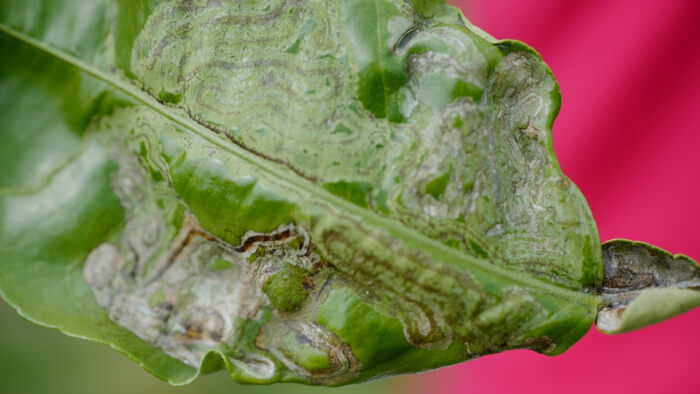 Source: Lsuagcenter
Source: Lsuagcenter
Leafminers create winding, discolored trails, or blotches within the leaves. They feed on the leaf tissues of plants by chewing tunnels throughout. They are the larvae of several different insects like moths, flies, beetles, and sawflies.
Although leafminers rarely cause serious damage, you shouldn’t leave them on your plants. To remove them, remove leaves that have leafminer damage. Or use insecticidal sprays containing spinosad that is approved for indoor use.
#5 Whiteflies
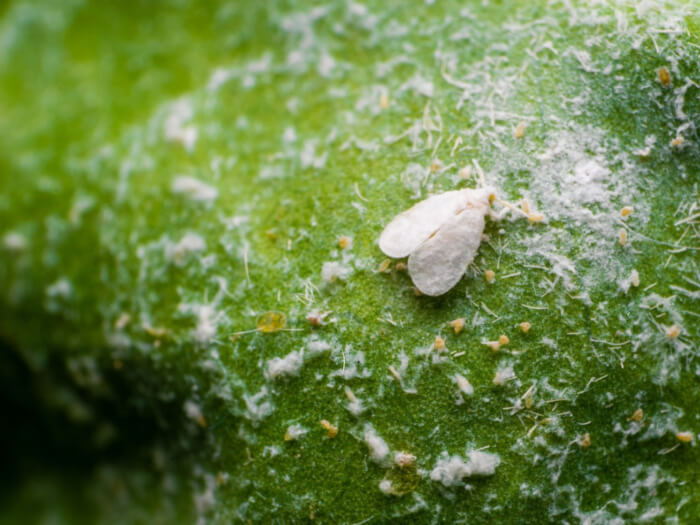 Source: Gardeningknowhow
Source: Gardeningknowhow
Whiteflies are white in appearance and small, measuring only 1/10 of an inch long. They suck the juices out of your plants, causing the leaves to turn yellow and fall off the plant.
To control them, you can use a strong stream of water from your hose or with a handheld vacuum to physically dislodge them from foliage. Or you can use insecticides or other sprays that are approved for indoor use.
#6 Common Brown Scale
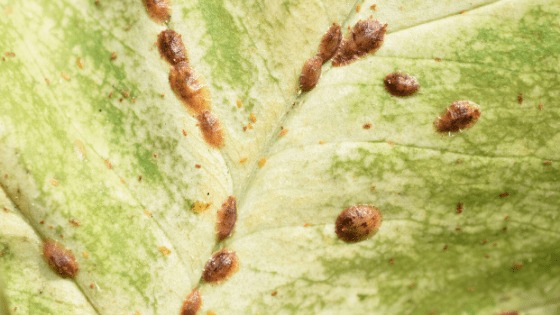 Source: Plantophiles
Source: Plantophiles
Common Brown Scale is so small, with a measure of 3-4 mm long. They clump along the stems, sucking out the plant’s juices.
The warm temperatures indoors are a good condition to allow them to keep reproducing year-round. Luckily, these pests are only mobile when they’re young, so you just discard the infested plants to get rid of these pests.
#7 Springtails
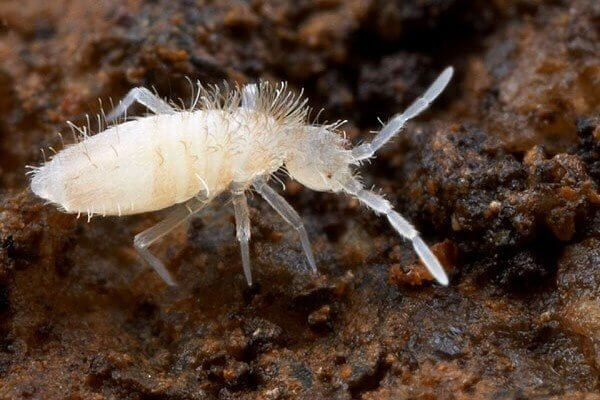 Source: Microgreening
Source: Microgreening
Springtails are tiny, wingless insects with a length of around 1/5 inch in various colors that live in the soil. They can jump from place to place to find decaying organic matter.
They’ll eat through the stems of your houseplants. To discard them, try letting the soil dry out thoroughly before watering again.
#8 Aphids
 Source: Gardendesign
Source: Gardendesign
Aphids are small, soft-bodied insects that can be white, brown, black, orange, yellow, green, or pink. They love eating new growth and feed on soft stems, branches, and leaves.
Also, they suck out the sap from your plants, leaving behind a sticky residue called honeydew that attracts ants and sooty mold.
To control them, you can grow companion plantings near your houseplants such as catnip, garlic, and chives, which are crops aphids don’t like.
#9 Spider Mites
 Source: Gardenersworld
Source: Gardenersworld
Spider mites are super small. They feed on the underside of plant leaves, and they thrive in hot, dry conditions. Their sign of a spider mite infestation is plant damage like light-color speckling on the surface of leaves.
To get rid of them, you can use neem oil or insecticidal soaps.
#10 Mealybugs
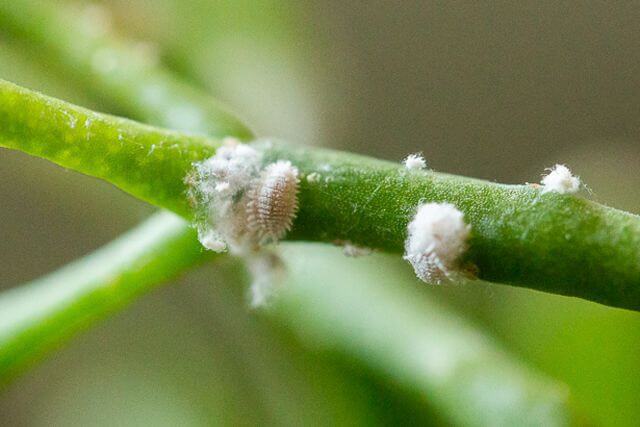 Source: Thespruce
Source: Thespruce
Mealybugs are oval-shaped, soft-bodied insects. They live in colonies on the underside of the leaves and in the small nooks between the leaves and stems.
They suck out the juices from your plants. To control them, you can use neem oil and apply it more than once to eliminate all.
